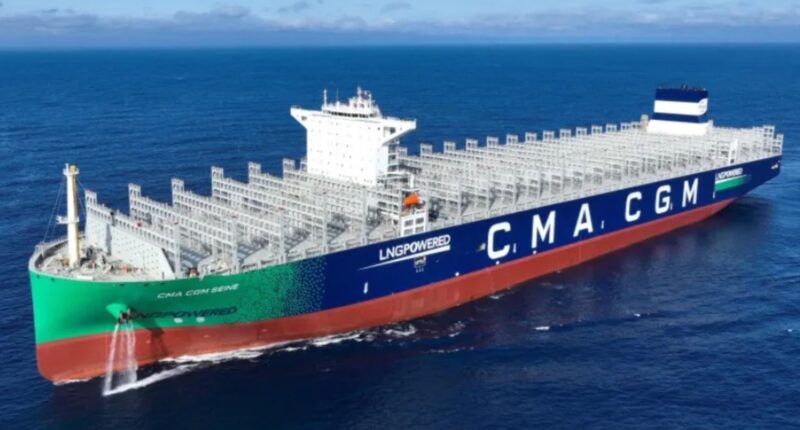CHINA deployed a giant cargo ship to sea as a demonstration of its manufacturing prowess in response to President Trump’s focus on tariffs.
The 1,310-ft-long vessel is said to be capable of holding a whopping 220,000 tonnes of goods and stacking 24,000 containers.




Footage shows the monstrous vessel – built in just 17 months – ripping through the ocean.
Named the CMA CGM SEINE, the world’s largest vessel was delivered from its Hudong-Zhonghua shipyard in Shanghai on Tuesday.
The ship is equipped with a massive 18,600 cubic metres LNG fuel bunker, enabling it to cover almost 20,000 nautical miles at full capacity.
While dubbed the “sea monster”, this ship is actually more environmentally friendly than traditional oil-powered vessels.
It emits 20 percent less carbon dioxide, 85 percent fewer nitrogen oxides and 99 percent less particulate matter and sulphur oxides.
China’s objective in constructing these massive vessels is said to be lowering logistical expenses, promoting eco-friendly shipping practices, and enhancing its global connectivity.
The ship has already begun sailing from Asia to Europe.
It was built by Hudong-Zhonghua Shipbuilding (Group) Co., Ltd., one of China’s leading shipbuilding companies.
This is the 17th vessel built by the shipbuilder for CMA CGM Group, a French shipping company.
Until now, the world’s largest container ship was the MSC Irina – a Chinese ship almost identical in length to the CMA CGM SEINE, but shorter in width.
It is 167 feet wide – more than 30 feet narrower than this new ship.
The MSC Irina was built by Jiangsu Yangzijiang Shipbuilding Group in 2023 and put into service the same year.

It comes as China recently unveiled an enormous cargo drone dubbed the “pickup truck of the sky” that can carry a tonne.
The drone, called CH-YH1000, was made public in January, when China announced it had passed its “full-load taxiing test”.
It is shaped like a passenger plane, with two large horizontal wings and a tail fin.
It has two miniature propellers whirring at the front and runs on a set of three wheels in a triangular formation.
The wheels don’t leave the tarmac at any point, but this early-stage test was just to ensure the drone is able to taxi properly.
The oversized drone will be used to ferry large amounts of cargo around, earning it the title of “pickup truck in the air”.
The mini plane is powered by two strong engines and sports an upward-flipping nose door to allow the easy loading and removal of cargo.


















